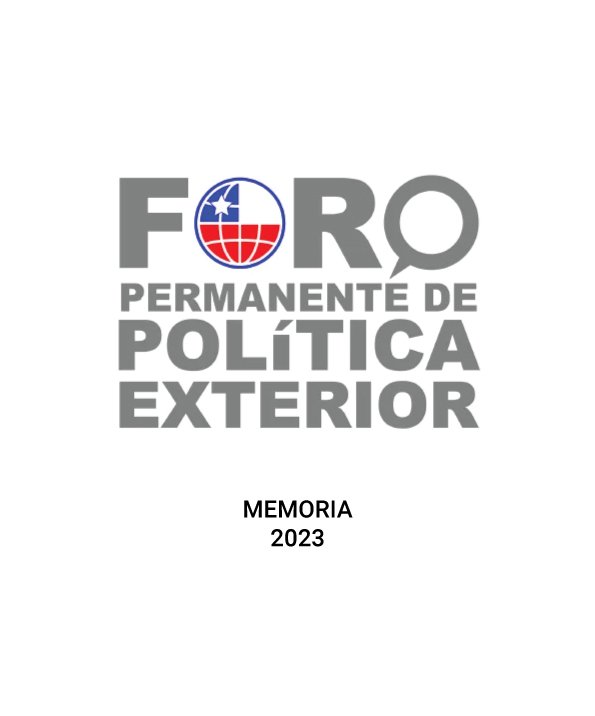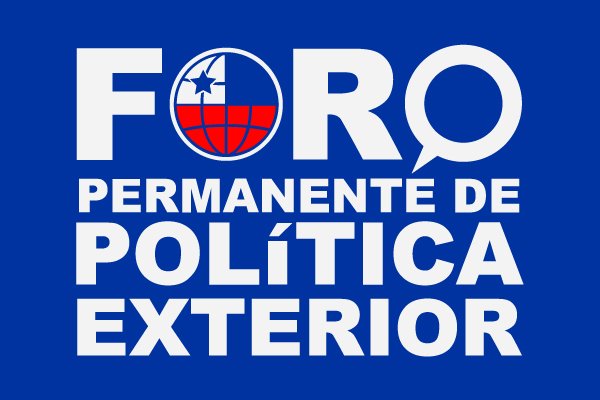We joined the U.S. Foreign Service nearly 40 years ago in the same entering class, but we took very different paths to get there. One of us grew up amid hardship and segregation in the Deep South, the first in her family to graduate from high school, a Black woman joining a profession that was still very male and very pale. The other was the product of an itinerant military childhood that took his family from one end of the United States to the other, with a dozen moves and three high schools by the time he was 17.
There were 32 of us in the Foreign Service’s class of January 1982. It was an eclectic group that included former Peace Corps volunteers, military veterans, a failed rock musician, and an ex–Catholic priest. None of us retained much from the procession of enervating speakers describing their particular islands in the great archipelago of U.S. foreign policy. What we did learn early on, and what stayed true throughout our careers, is that smart and sustained investment in people is the key to good diplomacy. Well-intentioned reform efforts over the years were crippled by faddishness, budgetary pressures, the overmilitarization of foreign policy, the State Department’s lumbering bureaucracy, a fixation on structure, and—most of all—inattention to people.
The Trump administration also learned early on that people matter, and so it made them the primary target of what the White House aide Steve Bannon termed “the deconstruction of the administrative state.” That is what has made the administration’s demolition of the State Department and so many other government institutions so effective and ruinous. Tapping into popular distrust of expertise and public institutions, President Donald Trump has made career public servants—government meteorologists, public health specialists, law enforcement professionals, career diplomats—convenient targets in the culture wars. Taking aim at an imaginary “deep state,” he has instead created a weak state, an existential threat to the country’s democracy and the interests of its citizens.
The wreckage at the State Department runs deep. Career diplomats have been systematically sidelined and excluded from senior Washington jobs on an unprecedented scale. The picture overseas is just as grim, with the record quantity of political appointees serving as ambassadors matched by their often dismal quality. The most recent ambassador in Berlin, Richard Grenell, seemed intent on antagonizing as many Germans as he could—not only with ornery lectures but also through his support for far-right political parties. The ambassador in Budapest, David Cornstein, has developed a terminal case of “clientitis,” calling Hungary’s authoritarian, civil-liberties-bashing leader “the perfect partner.” And the U.S. ambassador to Iceland, Jeffrey Ross Gunter, has churned through career deputies at a stunning pace, going through no fewer than seven in less than two years at his post.
In Washington, career public servants who worked on controversial issues during the Obama administration, such as the Iran nuclear negotiations, have been smeared and attacked, their careers derailed. Colleagues who upheld their constitutional oaths during the Ukraine impeachment saga were maligned and abandoned by their own leadership. In May, the State Department’s independent inspector general, Steve Linick, was fired after doing what his job required him to do: opening an investigation into Secretary of State Mike Pompeo’s alleged personal use of government resources. Battered and belittled, too many career officials have been tempted to go along to get along. That undercuts not only morale but also a policy process that depends on apolitical experts airing contrary views, however inconvenient they may be to the politically appointed leadership.

Not surprisingly, the Foreign Service has experienced the biggest drop in applications in more than a decade. Painfully slow progress on recruiting a more diverse workforce has slid into reverse. It is a depressing fact that today only four of the 189 U.S. ambassadors abroad are Black—hardly a convincing recruiting pitch for woefully underrepresented communities.
No amount of empty rhetoric about ethos and swagger can conceal the institutional damage. After four years of relentless attacks by the Trump administration and decades of neglect, political paralysis, and organizational drift, U.S. diplomacy is badly broken. But it is not beyond repair, at least not yet. What is needed now is a great renewal of diplomatic capacity, an effort that balances ambition with the limits of the possible at a moment of growing difficulties at home and abroad. The aim should be not to restore the power and purpose of U.S. diplomacy as it once was but to reinvent it for a new era. Accomplishing that transformation demands a focused, disciplined reform effort—one that is rooted in the people who animate U.S. diplomacy.
REFORM AND RENEWAL
The State Department is capable of reform. The challenge has always been to link that reform to wise statecraft and adequate funding. After 9/11, with uncommon speed and few additional resources, the department managed to retrofit itself to help prosecute the war on terrorism and take on the new imperatives of stabilization and reconstruction in Afghanistan and Iraq, along with smaller but still complex missions from sub-Saharan Africa to Southeast Asia. New training and incentives were put into play, and a generation of career Foreign Service officers was shaped by tours in conflict zones. Diplomats quickly became secondary players to the military, preoccupied with the kind of nation-building activities that were beyond the capacity of Americans to accomplish. It was easy to lose sight of the distinctive role of the U.S. Foreign Service—the classic, head-banging work of persuading senior national leaders to bridge sectarian divides and pursue a more inclusive political order while standing up for human rights.
Although the transformation of the State Department into a more expeditionary and agile institution was healthy in many respects, it was also distorting. It was tethered to a fundamentally flawed strategy—one that was too narrowly focused on terrorism and too wrapped up in magical thinking about the United States’ supposed power to transform regions and societies. It paid too little attention to a rapidly changing international landscape in which geopolitical competition with a rising China and a resurgent Russia was accelerating and mammoth global challenges, such as climate change, were looming. It also neglected what was happening at home—the powerful storms of globalization that had left many communities and parts of the economy underwater and would soon overwhelm the United States’ political levees.
The contours of a new agenda for diplomatic reform have to flow from a sensible reinvention of the United States’ role in the world. The restoration of American hegemony is not in the cards, given China’s rise and the diffusion of global power. Retrenchment is similarly illusory, since the United States cannot insulate itself from outside challenges that matter enormously to its domestic health and security.
Instead, U.S. diplomacy has to accept the country’s diminished, but still pivotal, role in global affairs. It has to apply greater restraint and discipline; it must develop a greater awareness of the United States’ position and more humility about the wilting power of the American example. It has to reflect the overriding priority of accelerating domestic renewal and strengthening the American middle class, at a time of heightened focus on racial injustice and economic inequality. And it has to take aim at other crucial priorities. One is to mobilize coalitions to deal with transnational challenges and ensure greater resilience in American society to the inevitable shocks of climate change, cyberthreats, and pandemics. Another is to organize wisely for geopolitical competition with China.
INVESTING IN PEOPLE
The ultimate measure of any reform effort is whether it attracts, unlocks, retains, and invests in talent. The last thing the State Department needs is another armada of consultants descending on Foggy Bottom with fancy slide decks full of new ideas about how the department should look. It’s time to focus on—and listen to—the people who drive U.S. diplomacy: the Foreign Service professionals who rotate through posts around the world, the civil service employees whose expertise anchors the department at home, and the foreign-national staff who drive so much of the work of U.S. embassies and consulates.
To start, the United States needs a top-to-bottom diplomatic surge. The Trump administration’s unilateral diplomatic disarmament is a reminder that it is much easier to break than to build. The country doesn’t have the luxury of waiting for a generational replenishment, marking time as new recruits slowly work their way up the ranks. Since 2017, nearly a quarter of the senior Foreign Service has left. That includes the departure of 60 percent of career ambassadors, the equivalent of four-star generals in the military. In the junior and midcareer ranks, the picture is also bleak. According to the Federal Employee Viewpoint Survey, as many as a third of current employees in some parts of the State Department are considering leaving—more than double the share in 2016.
The United States needs a top-to-bottom diplomatic surge.
A diplomatic surge will have to incorporate ideas that in the past have seemed heretical to the department and its career staff but that today are inescapable. These include bringing back select personnel with critical expertise who were forced out over the past four years; creating midcareer pathways into the Foreign Service, including lateral entry from the civil service; and offering opportunities for Americans with unique skills (in new technologies or global health, for example) to serve their country through fixed-term appointments. Another useful initiative would be to create a “diplomatic reserve corps” made up of former Foreign Service and civil service midlevel officers and spouses with professional experience who could take on shorter or fixed-term assignments abroad and in Washington. Still another idea would be to create an ROTC-like program for college students, an initiative that would broaden understanding of the diplomatic profession across society and provide financial support to those preparing for diplomatic careers.
All these ideas would have landed in the “too hard” pile when we were serving. But the reality today is that the State Department simply cannot afford to continue its bad habits of offering inflexible career tracks, imposing self-defeating hiring constraints, and encouraging tribal inbreeding among its cloistered ranks.
Another major priority is the need to treat the lack of diversity in the diplomatic corps as a national security crisis. It not only undermines the power of the United States’ example; it also suffocates the potential of the country’s diplomacy. Study after study has shown that more diverse organizations are more effective and innovative organizations. At the very moment when American diplomacy could benefit most from fresh perspectives and a closer connection to the American people, the diplomatic corps is becoming increasingly homogeneous and detached, undercutting the promotion of American interests and values.
Another priority is the need to treat the lack of diversity in the diplomatic corps as a national security crisis.
The top four ranks of the Foreign Service are whiter today than they were two decades ago; only ten percent are people of color. Just seven percent of the overall Foreign Service is made up of Black people, and just seven percent are Hispanic—well below each group’s representation in the U.S. labor force. Meanwhile, the Trump administration has reversed a more than quarter-century-long push to appoint more female ambassadors. Overall female representation in the Foreign Service remains roughly the same today as it was in 2000—still 25 percent below female representation in the wider U.S. labor force. These trends have effectively undone much of the progress made following the settlement of two class-action discrimination suits shortly after we entered the Foreign Service.
The State Department should make an unambiguous commitment that by 2030, America’s diplomats will, at long last, resemble the country they represent. Achieving this goal will require making diversity a key feature of the diplomatic surge at every point along the career pipeline. It will demand an unshakable commitment to diverse candidates and gender parity in senior appointments. And it will require the State Department’s leadership to hold itself accountable by not only getting departmental data in order and making the information accessible to the public but acting on it, as well, with clear annual benchmarks for progress. Lower promotion rates for racial and ethnic minorities and the precipitous drop-off in the number of women and minorities in the senior ranks are flashing red warning lights of structural discrimination.
The State Department ought to invest much more in mentorship, coaching, and diversity and inclusion training. It has to make its career track more responsive to the expectations of today’s workforce for a work-life balance rather than perpetuate the imbalance that has prevented too many talented Americans—disproportionally those from underrepresented groups—from serving their country. The department has to pay more attention to the particular hazards facing minorities serving overseas, including LGBTQ employees. And it has to revise its promotion criteria to require personnel to foster diverse, inclusive, and equitable workplaces.
The top four ranks of the Foreign Service are whiter today than they were two decades ago.
To succeed in both a serious diplomatic surge and a historic new campaign for diversity and inclusion, the department must commit to winning the war for talent. The entrance exams to the Foreign Service are designed to weed out candidates rather than recruit the most talented ones. Too much of a premium is placed on written and oral examinations and too little on a candidate’s résumé, academic performance, skills, expertise, and life experiences. The whole process can seem interminable—taking as long as two years from start to finish and inadvertently benefiting candidates who have the means to hold out. After hiring their diplomats, the most effective diplomatic services spend up to three years training them. The Foreign Service Institute still spends only six weeks testing the mettle of its recruits; the only real difference from our experience many years ago is that the tedious lectures now feature PowerPoint presentations.
Once on assignment, there is no rigorous, doctrinal approach to the art of diplomacy and no system for after-action reviews. The personnel evaluation process consumes three months of an officer’s time, with no commensurate accountability for, let alone improvement in, individual or collective performance. Opportunities for midcareer graduate or professional education are scarce and carry little weight with promotion panels. The effect is often to penalize employees who receive extra training or undertake assignments to other agencies or to Congress. They should be rewarded instead.
Senior leadership positions are increasingly out of reach for career personnel. Over the past few decades, the proportion of political appointees to career appointees at the State Department, reaching down to the deputy assistant secretary level, has grown far higher than at any other national security agency. That worrisome trend—like so many others during the Trump era—has worsened dramatically. Today, only one of the 28 positions at the assistant secretary level at the State Department is filled by an active-duty career officer confirmed by the U.S. Senate—the lowest number ever. A record share of ambassadors are also political appointees as opposed to professional diplomats, a significant blow to morale and to diplomatic effectiveness. In a reformed State Department, at least half the assistant secretary jobs and three-quarters of the ambassadorial appointments should be held by well-qualified career officers. The remaining political appointments should be driven by substantive qualifications and diversity considerations, not campaign donations.
Political appointments should be driven by qualifications and diversity considerations, not campaign donations.
To unlock its potential, the State Department must increase its staffing pipelines to deepen its officers’ command of core diplomatic skills and fluency in areas of growing importance, such as climate change, technology, public health, and humanitarian diplomacy. In the traditional area of economics, the State Department must strengthen its capabilities significantly—working closely with the Commerce and Treasury Departments—and promote the interests of American workers with the same zeal with which it has promoted the interests of corporate America.
The State Department also needs to rethink how and where it invests in language studies. One out of every four positions designated as requiring foreign-language skills is filled by an officer who does not in fact meet the minimum language requirements. The State Department trains nearly twice as many Portuguese speakers as it does Arabic or Chinese speakers. It should expand opportunities for midcareer graduate studies and incentivize continuous learning as a requirement for promotion. It should also streamline the evaluation process by determining personnel assignments on the basis of performance, expertise, and leadership development rather than through a process of competitive, careerist bidding built on connections and “corridor,” or word-of-mouth, reputations.
A NEW CULTURE
Part of investing in people means investing in the technology that allows them to realize their full potential. A more digital, agile, collaborative, and data-centric diplomatic corps depends on more robust and secure communications tools. Today, too many diplomats lack access to classified systems and technology, especially on the road. That leaves them more vulnerable to foreign intelligence and unable to keep up with other U.S. national security agencies. The COVID-19 pandemic has thrown into sharp relief the need to reimagine how to conduct diplomacy remotely or virtually.
Technology can no longer be seen as a luxury good for diplomacy. The last big technological push at the State Department came during Colin Powell’s tenure as secretary of state, nearly two decades ago, when the department began to set aside its mini-fridge-sized desktop computers and move cautiously into the modern age. It is long past time for another major effort. To enhance the department’s technological platforms, the State Department should appoint a chief technology officer reporting directly to the secretary of state. That official should work with the U.S. Digital Service—an information technology consulting group within the executive branch that was created in 2014—to make internal systems, foreign aid, and public diplomacy more effective. Just as the department’s chief economist helps diplomats understand the impact of global economic trends on U.S. interests, the chief technology officer should help diplomats grapple with disruptive technologies and leverage private-sector talent.
But technology is not the only—or the most important—aspect of the State Department’s culture that must change. A systemic reluctance to tolerate physical risk has led to the proliferation of fortress-style embassies that can trap personnel behind chancery walls and isolate them from the people they should be meeting, not only foreign officials but also members of civil society. This has also led to an ever-growing number of posts where officers can’t be joined by family members, shorter tours, misaligned assignment incentives, lower morale, and less effective diplomacy.
A torpid bureaucratic culture is no less significant. Policy information and recommendations often amass 15 or more sign-offs before reaching the secretary of state’s office, suffocating initiative and stifling debate. Unstaffed Foreign Service positions create an imbalance between Washington and the field that prevents decentralized decision-making. And a rigid promotion structure incentivizes careerism over political or moral bravery.
Technology can no longer be seen as a luxury good for diplomacy.
A seismic cultural shift is needed to create a more upstanding, courageous, and agile institution, with greater tolerance for risk and a simplified, decentralized decision-making process. The State Department must get out of its own way—delegating responsibility downward in Washington and outward to qualified chiefs of mission overseas and reducing the number of undersecretaries and top-level staff members to avoid duplicative authority and inefficiencies. Initiative should be prized, and the passive-aggressive habit of waiting for guidance from above should be discouraged.
The department ought to discard the current cumbersome process for clearing papers and policy recommendations and start from scratch. A new, more flexible framework would allow expertise in Washington and in the field to be quickly distilled into cogent policy proposals and would grant embassies in the field more autonomy to implement the resulting decisions. The State Department’s leaders must also offer political top cover for constructive dissent, supplanting the corrosive “keep your head down” culture with an “I have your back” mentality—in other words, the exact opposite of how the State Department treated its diplomats during the 2019 impeachment hearings.
CHANGE THAT LASTS
Any effort to reform the State Department should start from within. It should focus in the first year of a new administration or a new term on what can be accomplished under existing authorities and without significant new appropriations. That is the moment of greatest opportunity to set a new direction—and the moment of greatest vulnerability to the habitual traps of bureaucratic inertia, overly elaborate and time-consuming restructuring plans, partisan bickering, and distracting forays into the capillaries of reform rather than its arteries.
If the department can take the initiative and demonstrate progress on its own, that would be the best advertisement for sustained congressional support and White House backing for a new emphasis on diplomacy. It would be the best way to show that U.S. diplomats are ready to earn their way back to a more central role. It could help generate momentum for a rebalancing of national security budget priorities at a moment when U.S. rivals are not standing still; in recent years, the Chinese have doubled their spending on diplomacy and greatly expanded their presence overseas.
A rigid promotion structure incentivizes careerism over political or moral bravery.
With a sturdy foundation of reforms laid, the next step would be to codify them in the first major congressional legislation on U.S. diplomacy in 40 years. The last Foreign Service Act, passed in 1980, modernized the mission and structure of the State Department, building on acts from 1924 and 1946. A new act would be crucial to making reforms durable. It would also help shape a style of diplomacy that is fit for an increasingly competitive international landscape and better equipped to serve the priority of domestic renewal. Serious, lasting transformation of U.S. diplomacy will be very hard. But it matters enormously to the future of American democracy in an unforgiving world.
We both bear the professional scars, and have enjoyed the rewards, of many eventful years as career diplomats. We saw plenty of examples of skill and bravery among our colleagues in hard situations around the world—from the horrific genocidal violence of Rwanda and the epic turmoil of post-Soviet Russia in the 1990s to the later challenges of ambassadorial postings in Liberia after its civil war and in Jordan in the midst of a once-in-a-half-century royal succession. We saw how U.S. diplomats can produce tangible results, whether by holding secret talks with adversaries, mobilizing other countries to ease the plight of refugees, or promoting American jobs and economic opportunities.
Through it all, however, we still remember vividly the sense of possibility and shared commitment to public service that drew the two of us and 30 other proud Americans to our Foreign Service entering class all those years ago. Today, there is a new generation of diplomats capable of taking up that challenge—if only they are given a State Department and a mission worthy of their ambitions and of the country they will represent.
Contenido publicado en Foreign Affairs





